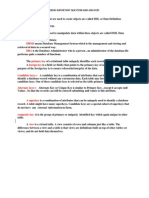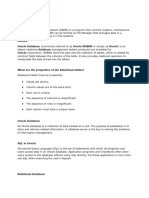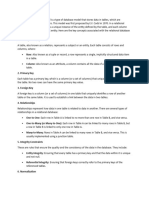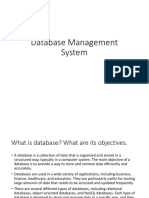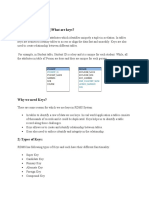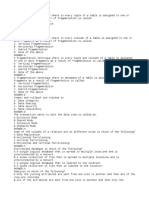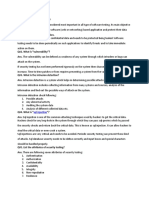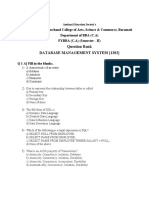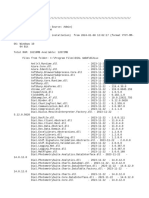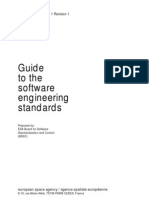0% found this document useful (0 votes)
128 views2 pagesQuestions Answers DBMS
The document contains definitions and explanations of various database concepts:
- BCNF is a normal form stricter than 3NF.
- A join combines tables using common column values. A self join uses a table joined with itself.
- Cardinality is the maximum connections between entities while modality is the minimum.
- A supertype is a general entity type related to subtypes as specific entity types.
- Generalization identifies more general types while specialization identifies more specific types.
- A weak entity depends on another entity for its existence.
- Relationships can be one-to-one, one-to-many, or many-to-many.
- Keys uniquely identify rows
Uploaded by
Abdul WaheedCopyright
© © All Rights Reserved
We take content rights seriously. If you suspect this is your content, claim it here.
Available Formats
Download as TXT, PDF, TXT or read online on Scribd
0% found this document useful (0 votes)
128 views2 pagesQuestions Answers DBMS
The document contains definitions and explanations of various database concepts:
- BCNF is a normal form stricter than 3NF.
- A join combines tables using common column values. A self join uses a table joined with itself.
- Cardinality is the maximum connections between entities while modality is the minimum.
- A supertype is a general entity type related to subtypes as specific entity types.
- Generalization identifies more general types while specialization identifies more specific types.
- A weak entity depends on another entity for its existence.
- Relationships can be one-to-one, one-to-many, or many-to-many.
- Keys uniquely identify rows
Uploaded by
Abdul WaheedCopyright
© © All Rights Reserved
We take content rights seriously. If you suspect this is your content, claim it here.
Available Formats
Download as TXT, PDF, TXT or read online on Scribd
/ 2
